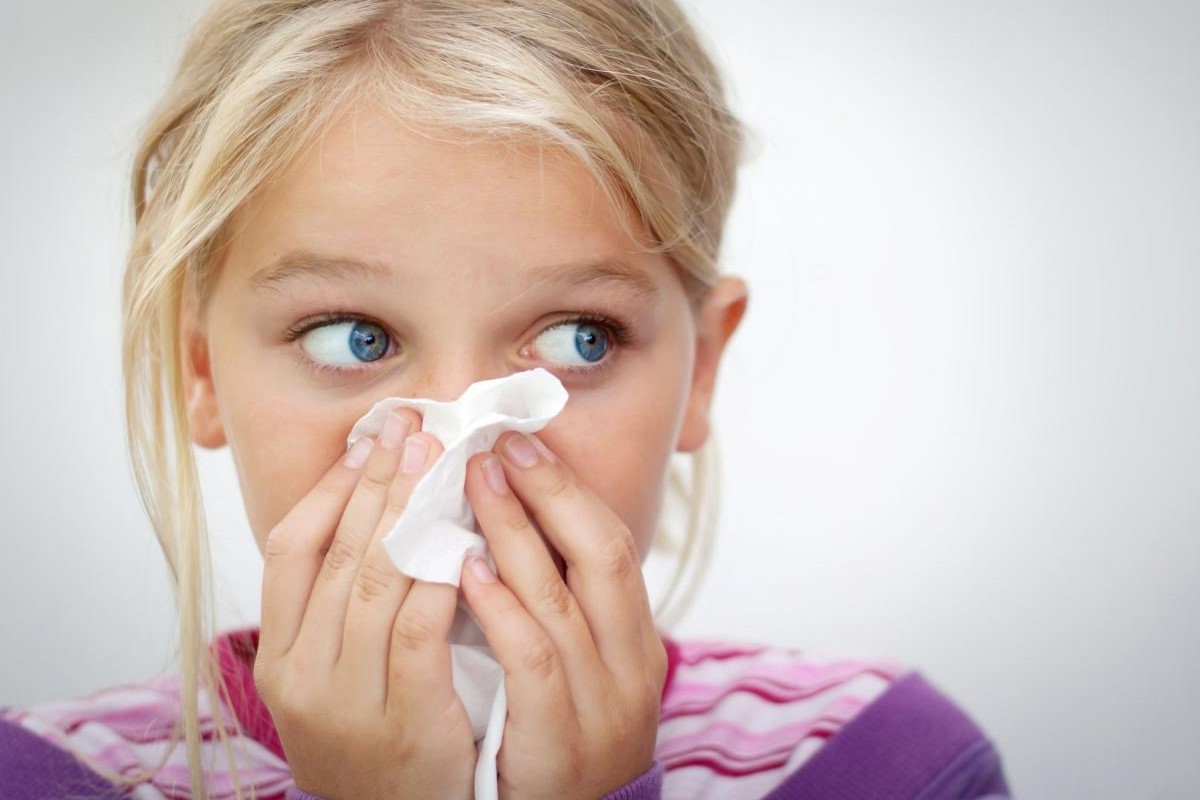
Allergic rhinitis: causes, symptoms, diagnosis and treatment
Allergic rhinitis is an inflammation of the nasal mucosa caused by exposure to certain allergens, such as dust mites, animal epithelia and moulds
The allergic reaction in the nose is caused by the contact of these allergens with antibodies, specific IgE, which causes the release of substances, such as histamine, that are responsible for the symptoms of allergic rhinitis.
These symptoms are similar to those of a cold, which include sneezing, stuffy nose, rhinorrhoea, and can occur seasonally, if the person is allergic to certain pollens, or be persistent throughout the year, as with allergies to animal epithelia or dust mites.
Familiarity also plays a role in the onset of allergic rhinitis, so a person with parents prone to this disorder may be more likely to be affected.
Sneezing and runny nose: Symptoms of allergic rhinitis
Symptoms of allergic rhinitis, as we have specified, can be present year-round when caused by allergens such as dust mites or can be seasonal when caused by pollens such as grass, ragweed, birch and olive pollens.
Typical symptoms of allergic rhinitis are
- sneezing
- runny nose (rhinorrhoea)
- itching
- nasal obstruction
- dyspnoea (difficulty breathing)
These may also be associated with ocular symptoms (in this case we speak of allergic oculorhinitis), such as
- tearing
- burning
- redness
- itching
Allergic rhinitis: What tests should be done for diagnosis?
In the presence of symptoms that may lead one to suspect allergic rhinitis, it is important to consult an allergy specialist, who can confirm or exclude the presence of this condition by performing specific diagnostic tests.
Among these, the most common is the prick test, a skin test for inhalant allergens, but a search for specific IgE through blood tests may also be required.
In case of complications such as sinusitis or nasal polyps, it is recommended to have a visit with an ENT specialist, who can perform instrumental tests (nasal endoscopy) for further diagnosis.
Those who discover that they are prone to allergies should then avoid exposure to the allergen as much as possible.
When it comes to inhalant allergens, it is obviously more complicated, but one can consult the pollen calendar online to check the presence of pollen in the air and avoid going outside during peak pollen hours, the hottest hours of the day.
Instead, in the case of dust mite allergies, it is important to follow environmental remediation rules, such as
- wash bed linen at 60°;
- use anti-mite mattress and pillow covers;
- do not use heavy carpets and curtains, especially in the bedroom;
- avoid having furnishings on the shelves that can trap dust.
How to treat allergic rhinitis
When the diagnosis of allergic rhinitis is confirmed, the doctor may prescribe certain medications that alleviate the symptoms of rhinitis, such as oral antihistamines or eye drops.
The gold standard of therapy for allergic rhinitis, however, is the use of topical nasal steroids or the combination of corticosteroid and topical nasal antihistamine.
It is also important to perform regular nasal washes with saline solution, which is useful for cleaning the nasal cavities of inhaled allergens.
Then there are the so-called allergy vaccines, allergen-specific immunotherapy, a causal therapy also available in tablets or oral drops, which the patient can take comfortably at home.
This is the only therapy that can change the course of the allergy and reduce the risk of asthma in patients with allergic rhinitis.
This is a very important treatment option because, as we have said, allergic rhinitis has a negative impact on patients’ quality of life.
It reduces performance at study or work and worsens the quality of sleep, so it is important to see an allergy specialist for a correct diagnostic picture and to receive customised treatment.
Read Also
Emergency Live Even More…Live: Download The New Free App Of Your Newspaper For IOS And Android
Paediatric Seasonal Illnesses: Acute Infectious Rhinitis
Insects Allergies: A General Overview
Anaphylaxis And Allergies, Adrenalin Auto-Injectors: A Complete Guide
Allergies To Stinging Insects: Anaphylactic Reactions To Wasps, Polistines, Hornets, Bees
Anaphylactic Shock: What It Is And How To Deal With It
Wasp Sting And Anaphylactic Shock: What To Do Before The Ambulance Arrives?
Anaphylactic Shock: Symptoms And What To Do In First Aid
Adverse Drug Reactions: What They Are And How To Manage Adverse Effects
Symptoms And Remedies Of Allergic Rhinitis
Anaphylactic Shock: What It Is, Symptoms, Diagnosis And Treatment
What Is And How To Read The Allergy Patch Test
Allergies: New Drugs And Personalised Treatment
When Can We Talk About Occupational Allergies?
Nickel Allergy: What Objects And Foods To Avoid?
Food Allergies: Causes And Symptoms
How To Cure Allergic Conjunctivitis And Reduce Clinical Signs: The Tacrolimus Study
Bacterial Conjunctivitis: How To Manage This Very Contagious Disease
Allergic Conjunctivitis: An Overview Of This Eye Infection
Allergic Dermatitis: Symptoms, Diagnosis, Treatment
It’s Spring, Pay Attention To Allergy Symptoms


